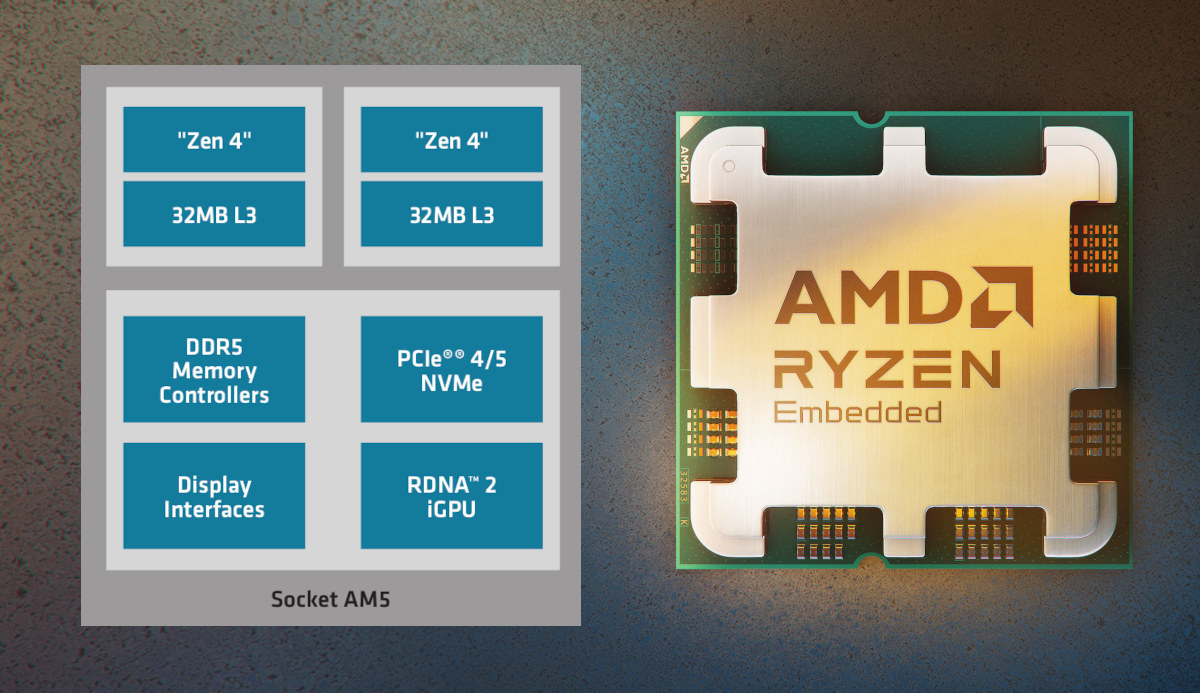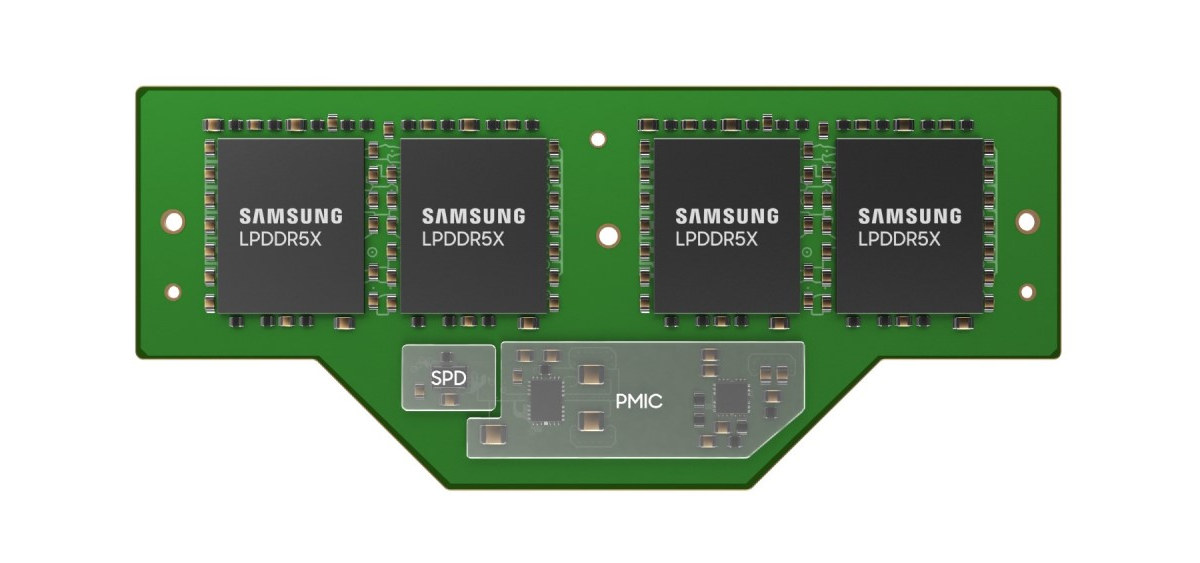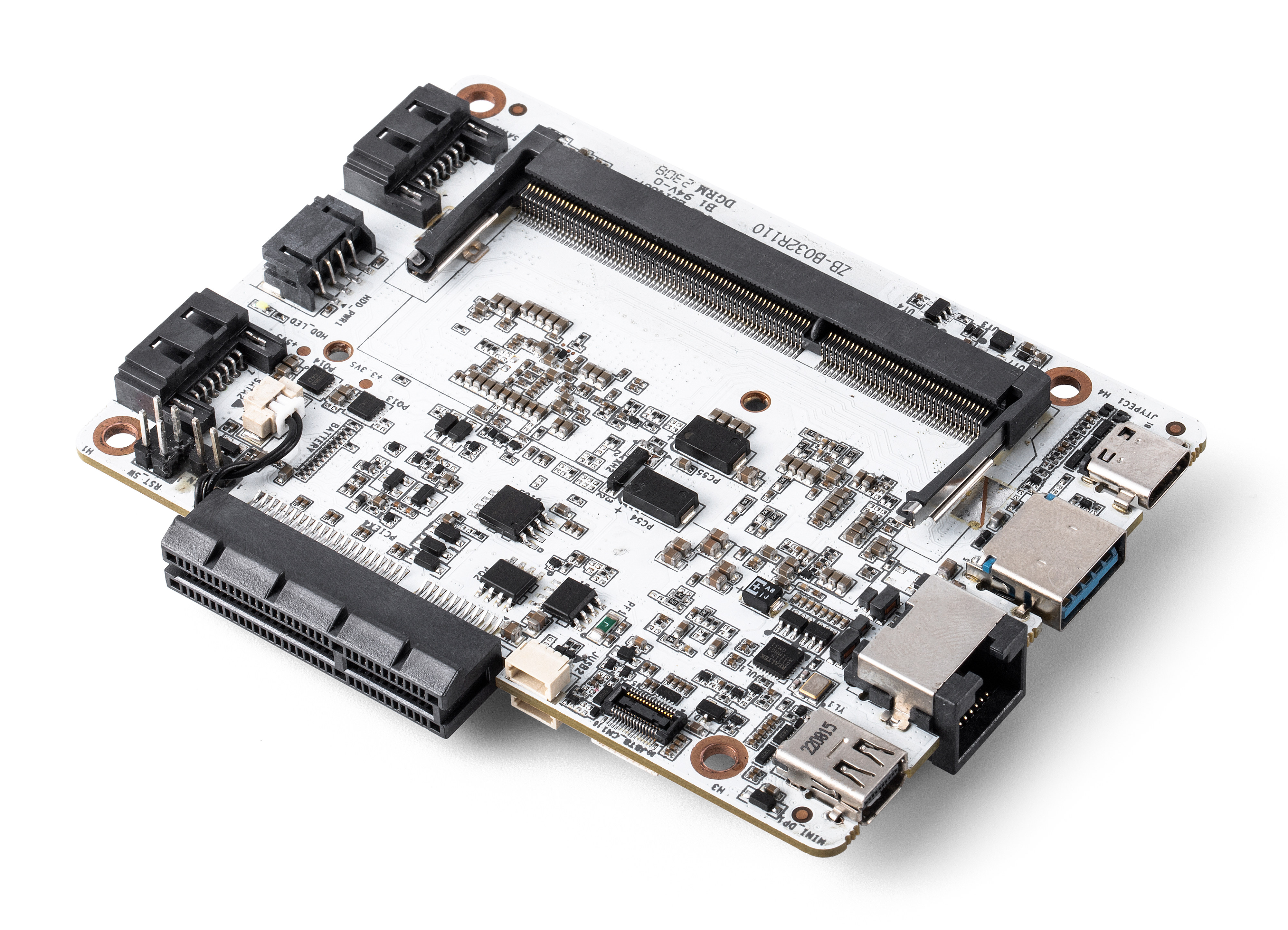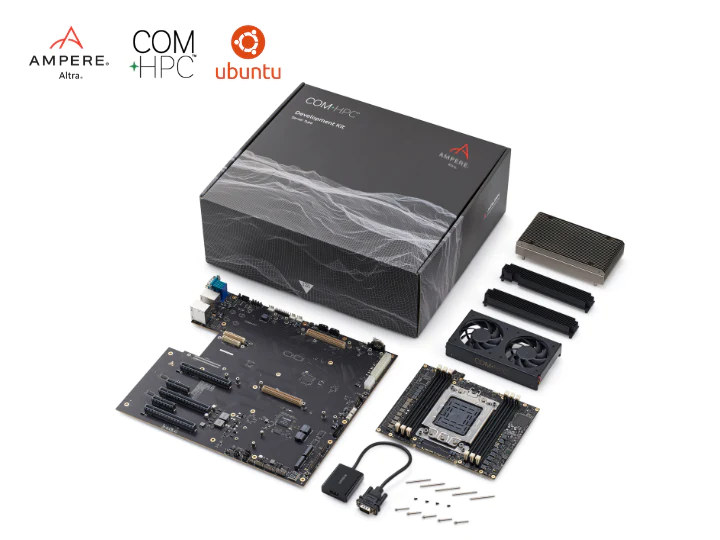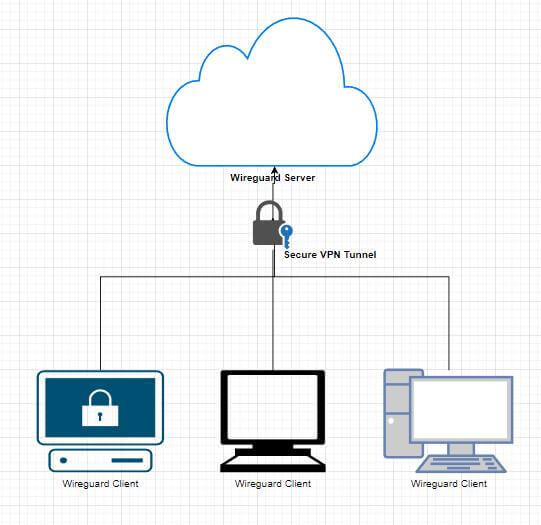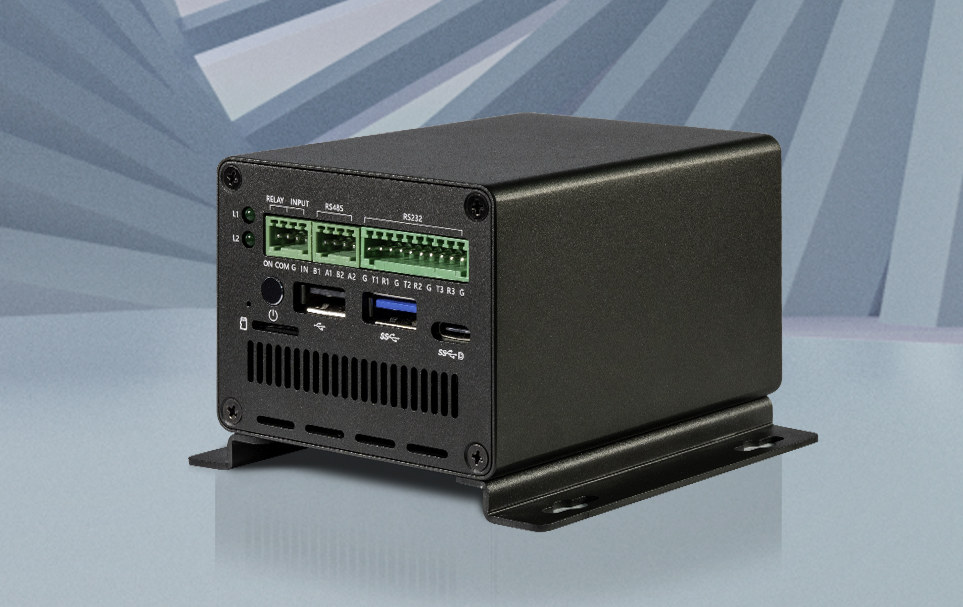AMD Ryzen Embedded 7000 Series is a new “Zen 4” processor with integrated Radeon RDNA 2 graphics designed for high-performance embedded systems targetting industrial automation, machine vision, robotics, and edge servers. The last two Ryzen Embedded families from AMD, namely the Ryzen Embedded V3000 and Ryzen Embedded 5000, mostly targeted headless networking and storage applications since the processors lacked any 3D GPU. But the new Ryzen Embedded 7000 processors bring back graphics with a Radeon RDNA 2 GPU clocked at up to 2.2 GHz and also come with up to 12 Zen4 cores clocked at up to 5.4 GHz, and feature up to 28 lanes of PCIe 5 connectivity. Ryzen Embedded 7000 Series specifications: CPU – Up to 12-core/24-thread “Zen 4” processor GPU – Radeon RDNA 2 graphics 1WGP @ 2.2GHz max with support for AV1/VP9 decode, H.264/HEVC decode/cncode Cache – Up to 1MB L2 cache/Core, up to 32MB L3 […]
Samsung LPCAMM integrates LPDDR RAM on removable modules
Samsung has unveiled a new type of removable memory module called the LPCAMM (Low Power Compression Attached Memory Module) with LPDDR designed for PCs and laptops, and the company expects them to eventually be used in servers found in data centers. I would also not be surprised to find them in embedded systems in the future, for example in an updated COM Express standard. Laptops typically come with either low-power DDR (LPDDR) soldered to the motherboard or SO-DIMM modules with DDR memory chips, but there weren’t any removable modules with low-power memory so far, and Samsung LPCAMM changes that. The new LPCAMM module will initially be fitted with LPDDR5X chips and deliver a 50% performance boost (up to 7500 MT/s), improve power efficiency by 70%, and reduce the mounting area by 60% (78 x 23mm) compared to SO-DIMM modules A main factor in reducing the area required is that two […]
ZimaBlade – A $64+ low-profile Intel Celeron board for server applications and more (Crowdfunding)
ZimaBlade is an inexpensive low-profile board based on an Intel Celeron dual-core or quad-core processor and designed for server applications with a low-profile RJ45 Gigabit Ethernet port, two SATA connectors, and a PCIe slot, but not only as the board also comes with display interfaces such as mini DP and USB-C DisplayPort Alt. mode and a few USB ports. It’s not IceWhale Technology’s first venture into portable server board as the company previously introduced the Zimaboard based on Intel Celeron Apollo Lake processors with many of the same features back in 2021. The new ZimaBlade offers more interfaces as well as a complete enclosure instead of just a large heatsink. ZimaBlade specifications: SoC (one or the other) ZimaBlade 3760 – Intel Celeron dual-core processor up to 2.2 GHz (Turbo) with Intel UHD graphics; 6W TDP ZimaBlade 7700 – Intel Celeron quad-core processor up to 2.4 GHz (Turbo) with Intel UHD […]
Use Kea DHCP server as ISC DHCP server (dhcpd) is being phased out
The ISC DHCP server (dhcpd) was traditionally used to set up a DHCP server in Linux, but the software is reaching end-of-life, and the Internet Systems Consortium is now recommending their own Kea DHCP server or alternatives such as Dnsmasq or udhcpd (as found in Busybox) as a replacement. I was unaware of this having just used the isc-dhcp-server package to set up a DHCP server in NanoPi R6C router/mini PC earlier this month. But a blog post on Ubuntu informed us dhcpd was going away, and Canonical plans to switch over the Kea DHCP server instead. The main difference from the user perspective is that Kea relies on JSON configuration files so all your dhcpd files will have to be rewritten. Other highlights for the Kea DHCP server include: Modular component design, extensible with hooks modules. Kea includes daemons for a DHCPv4 server, a DHCPv6 server, and a dynamic […]
ADLINK Ampere Altra Dev Kit features ATX motherboard with 32 to 80-core Arm COM-HPC CPU module
ADLINK Ampere Altra Dev Kit is an “IoT prototyping kit” based on an ATX motherboard fitted with a COM-HPC-ALT Server Type Size E module powered by an Ampere Altra 32, 64, or 80-core Arm Neoverse N1 server processor, and supporting up to 768GB DDR4 memory. It’s basically the same hardware as found in the Ampere Altra Developer Platform (AADP), but without the tower and power supply, nor optional features like liquid cooling or 10GbE interfaces. Ampere Altra Dev Kit (AADK) specifications and content: Computer-on-Module – COM-HPC Server Type Size E Ampere Altra module with Ampere Altra 32 to 80-core 64-bit Arm Neoverse N1 processor up to 1.7/2.2/2.6 GHz (32/64/80 cores, TPD: 60W to 175W), up to 768 DDR4 ECC memory Mainboard – COM-HPC Server Base carrier board Storage – 2x M.2 slot for NVMe SSD Video – VGA port Audio – 3.5mm audio jack Networking – 1x Gigabit Ethernet Expansion […]
How to setup a WireGuard server on Ubuntu for remote login
In this article, we will show you how to set up a WireGuard server on Ubuntu in order to use it for remote login. Introduction to WireGuard First of all, let’s first understand, what is WireGuard? WireGuard is a very simple and fast VPN tool with state-of-the-art encryption. Its goal is to be faster, simpler, more streamlined, and easy to use than IPsec, while avoiding the hassle of large-scale configuration. WireGuard is designed as a general-purpose VPN to run on embedded interfaces and supercomputers in many different environments. Originally released for the Linux kernel, WireGuard is now widely deployed and supported across platforms (Windows, macOS, BSD, iOS, Android). WireGuard is growing rapidly and is already considered the most secure, easiest-to-use, and simplest VPN solution in the industry. Basic Concepts of WireGuard Several basic concepts are involved in WireGuard: Peer: A node in WireGuard. Private key: Each node has its own […]
Install a server in your house, get free hot water!
Heata, which began as an innovation project with British Gas, is a UK company that connects a server to your hot water cylinder and provides hot water to the house master for free up to 4.8 kWh per day, and at least 2.5 kWh as per contractual obligations. Companies spend millions of dollars to cool the servers hosted in their data centers and most of that heat is completely wasted. So Heata decided to create a win-win solution that lowers their cooling cost and provides free hot water to whoever has their server installed in their house. The installation process is said to be tested and approved by British Gas so you don’t lose your hot water cylinder warranty, and the heat transfer mechanism is patented as well under the UK patent GB2576035. A technician would come to cut the insulation and attach a thermal bridge to the cylinder. The […]
Rockchip RK3588S industrial mini PC features CAN Bus, RS485 & RS232 interfaces, relay, and more
Firefly EC-R3588SPC industrial mini PC is based on the Rockchip RK3588S octa-core Cortex-A76/A55 processor and offers various interfaces used in industrial settings such as RS485 and RS232 serial interfaces, a CAN Bus, a relay, and digital input. The system is offered with up to 32GB RAM and 128GB eMMC flash, supports M.2 NVMe or SATA storage, as well as Gigabit Ethernet, Fast Ethernet, WiFi 4, Bluetooth 5.0, and 4G LTE cellular connectivity. You’ll also find 8K-capable HDMI and DisplayPort (USB-C) video outputs, some USB ports, and a 3.5mm audio jack. Firefly EC-R3588SPC specifications: SoC – Rockchip RK3588S octa-core processor with CPU – 4x Cortex-A76 cores @ up to 2.4 GHz, four Cortex-A55 cores @ up to 1.8 GHz GPU – Arm Mali-G610 MP4 quad-core GPU with OpenGL ES3.2 / OpenCL 2.2 / Vulkan1.1 support AI accelerator – 6 TOPS NPU VPU – 8Kp60 H.265/VP9/AVS2 video decoder, 4Kp60 AV1 decoder, 8Kp30 […]


